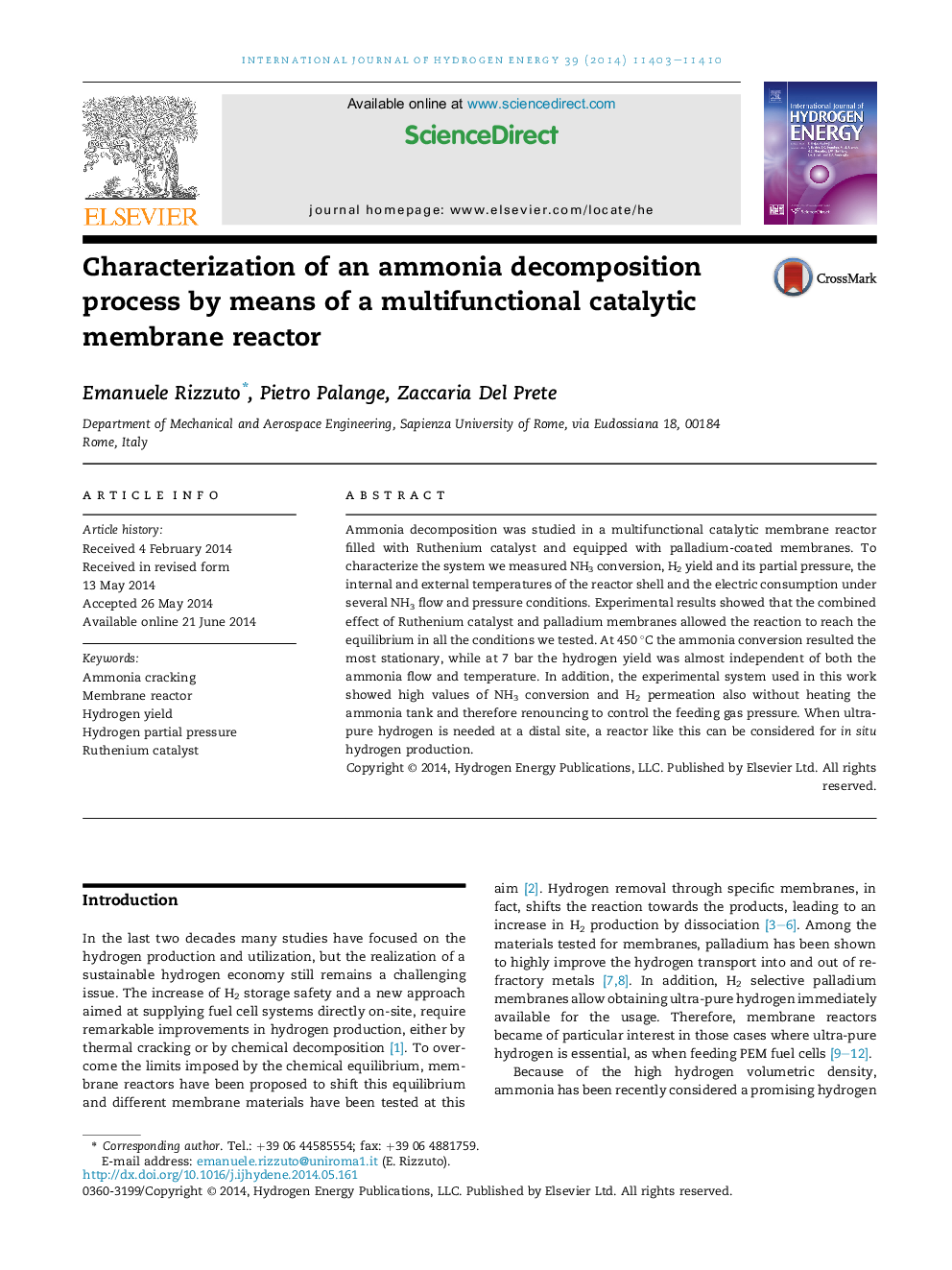| Article ID | Journal | Published Year | Pages | File Type |
|---|---|---|---|---|
| 1273158 | International Journal of Hydrogen Energy | 2014 | 8 Pages |
•NH3 dissociation (X) was studied in a membrane reactor filled with Ruthenium catalyst.•Contributes of selective H2 membranes and of Ru catalyst were exploited.•Ammonia dissociation was higher than 99.4% for all the tested conditions.•At 7 bar, H2 permeation (η) was higher than 83% for every temperature and GHSV tested.•We obtained very high values of X and η even working at mild environmental conditions.
Ammonia decomposition was studied in a multifunctional catalytic membrane reactor filled with Ruthenium catalyst and equipped with palladium-coated membranes. To characterize the system we measured NH3 conversion, H2 yield and its partial pressure, the internal and external temperatures of the reactor shell and the electric consumption under several NH3 flow and pressure conditions. Experimental results showed that the combined effect of Ruthenium catalyst and palladium membranes allowed the reaction to reach the equilibrium in all the conditions we tested. At 450 °C the ammonia conversion resulted the most stationary, while at 7 bar the hydrogen yield was almost independent of both the ammonia flow and temperature. In addition, the experimental system used in this work showed high values of NH3 conversion and H2 permeation also without heating the ammonia tank and therefore renouncing to control the feeding gas pressure. When ultra-pure hydrogen is needed at a distal site, a reactor like this can be considered for in situ hydrogen production.
